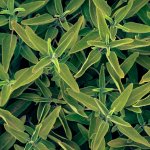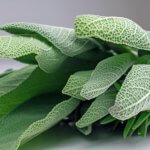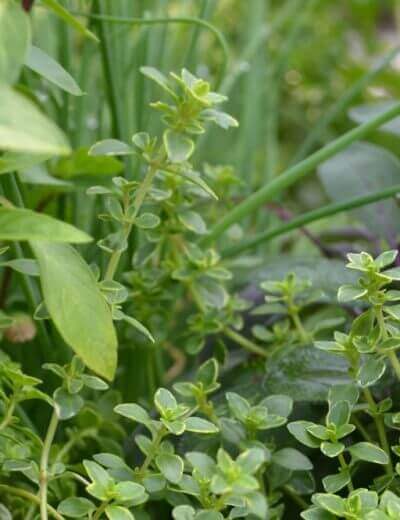Sage
Sage is a perennial with an average lifespan of four years. It loves the sun and, once established, is drought-tolerant. Sage has woody square stems with velvety leaves.
Sage leaves and its flowers are edible and can be used both fresh and dried. It has a bitter, lemony taste when dried, and is more pungent when fresh. The younger leaves have the most flavor. Often used as seasoning for stuffing, soups and more, sage is an aromatic herb that also works well as potpourri.



